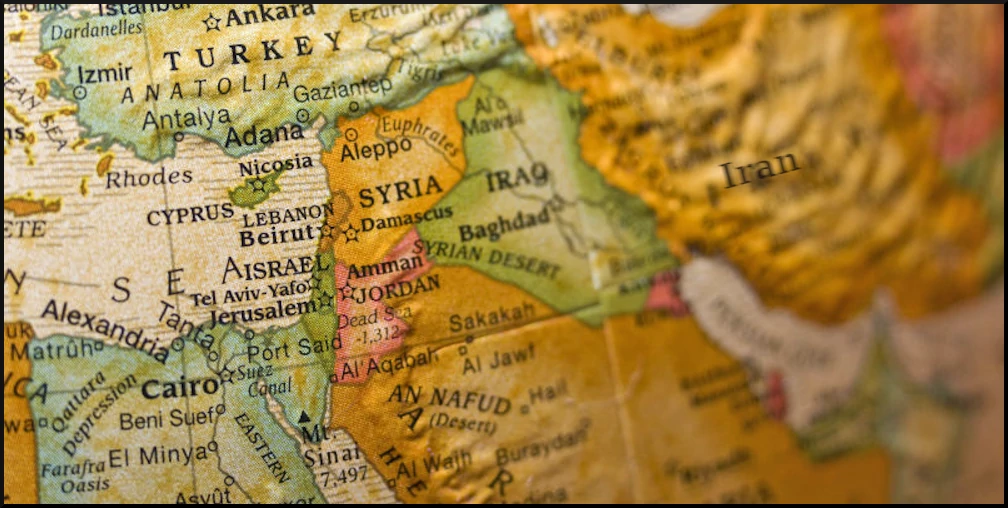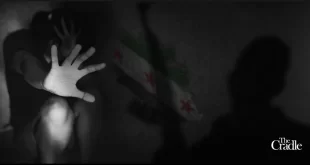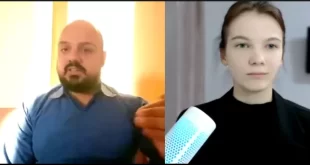by Susan Dirgham, published on Pearls and Irritations, November 13, 2023
Australian foreign policy makers seem not to realise that the demographic makeup of Australia means increasing numbers of us are connected to victims of wars instigated by the United States. Australians’ support for future US wars cannot be relied on from huge sections of the community.
The problem of a divided country and divided loyalties is inevitable when successive Australian governments have aligned with Washington even though America’s foreign policy this century is being determined by warmongering neoconservatives.
Soon after 9/11, when US General Wesley Clark informed the world that the US planned to ‘take out’ seven countries – Iraq, Syria, Lebanon, Libya, Somalia, Sudan and Iran – it seems that Australian policy makers were not paying attention.
Plans to ‘take out’ these countries – all of them Muslim-majority countries a long way from North America, the UK and Australia – could be termed ‘crimes against peace’. The inevitable wars resulting from these policies would have a far-reaching negative impact on people everywhere.
‘Taking out’ countries requires covert, nefarious activities. Some of the most chilling of such activities occurred in Syria.
Washington’s plan to ‘take out’ Syria depended for its success on a skewed narrative and a foreign-backed militant Islamist ‘revolution’, now based in Idlib.
The basic human values of most, if not all, Australians would predispose us to being suspicious of a US neocon war, the narrative that sells it, and the ‘revolution’ that preceded it. We would normally show empathy for the victims. However, we have been distracted by the narrative’s dominant theme: ’Assad is a brutal dictator who kills his own people’.
As one Middle East specialist described it, ‘Assad’ is like a magician’s diversion, used to distract us while Syria is being ‘bled to death’.
The reasons the western media, NGOs and bodies linked to the UN have for pushing the simplistic war narrative may be due to their close links to Washington or pressure from Washington. Or it may simply be the need to please those who fund them.
The ABC has been no exception.
In response to blatantly biased commentary on the ABC, I have submitted lengthy complaint letters to the ABC’s Audience and Consumer Affairs. These letters (e.g. here, here and here) cover many aspects of the war that demand investigation even now.
In this article, I will deal with the allegation that Syria crossed President Obama’s ‘red line’ when it used chemical weapons against its own people on 21 August 2013.
A recently published memo from the US Defence Intelligence Agency (DIA) gives reason to further challenge this oft-repeated claim. However, before introducing the subject of the memo, we should consider the nature of the neoconservatives’ war on Syria.
Unlike the Iraq war with its shock and awe and its ‘Coalition of the Willing’ boots on the ground, the ‘taking out’ of Syria has more closely resembled the US interventions last century in Nicaragua and Afghanistan, where proxy forces – the Contras in Nicaragua and the mujahideen in Afghanistan – were armed and funded to be America’s ‘boots on the ground’.
In Syria, the US uses the ‘moderate rebels’, a euphemism for hundreds of different militant groups comprising a mix of local and foreign fighters, ranging from radical to extreme, but all ready and willing to kill, so hardly ‘moderate’. They have united at times to commit the most dastardly of crimes.
Since at least 2015, insurgents in Syria have been supported by a western international coalition, which includes the ADF. The official justification given for the uninvited Coalition forces in Syria is ‘on the basis of the collective self-defence of Iraq, given that ISIS has established bases in Syria’. (Unofficially, it may also be to legitimise America’s illegal occupation of Syria’s oil-rich region and its looting of Syria’s resources.)
The year after the ADF joined the coalition in Syria, ostensibly to take out ISIS, it was involved in an air attack that reportedly killed 100 Syrian soldiers, who had been fighting Islamic State. ‘Prime Minister Malcolm Turnbull’ said he wouldn’t ‘speculate about what went wrong…’
When part of the neocon narrative for the war on Syria is ‘Assad has killed more people than ISIS’, we can speculate about ‘what went wrong’. From America’s point of view, nothing went wrong – the killing of Syrian soldiers was fully in accordance with US plans. Furthermore, the ADF’s action enmeshed Australia even more deeply into the US war against Syria.
The claim about Assad killing more people than ISIS was first indirectly made, I believe, in June 2014 by former Israeli ambassador Michael Oren.
He made the claim in the same year that militants (including al-Qaeda affiliated Jabhat al-Nusra) controlled almost the entire Syrian border with Israel. We know some Sunni militants actually crossed into Israel because Prime Minister Netanyahu was photographed visiting wounded insurgents in an Israeli military hospital.
Former Israeli ambassador Oren’s words were most disrespectful of Islam. He said, ‘If we have to choose the lesser evil….the lesser evil is the Sunnis over the Shiites… From Israel’s perspective, if there is got to be an evil that is going to prevail, let the Sunni evil prevail.’
We can assume, therefore, that the ADF’s involvement in the killing of Syrian soldiers and the cover it provided ISIS forces would have been sanctioned by our close allies.
It shouldn’t surprise us that the ABC’s Foreign Correspondent program still broadcasts reports that favour the ‘revolution’ in Idlib province, despite the makeup of the groups in charge of Idlib.
Unlike the ABC, American analyst William Van Wagenen works to expose the ‘revolution’ and its unholy alliance with western and allied intelligence agencies.
(Many of Van Wagenen’s well-resourced articles are published by the Libertarian Institute. (and many of them have been republished on this blog – Editor) We may be repelled by the domestic policies of the US libertarians, but libertarians are a strong challenge to neocon wars. For example, in 2012, in response to the horrific images of a massacre in Houla, Syria, Australia expelled Syria’s top diplomats, whereas Congressman Ron Paul, a libertarian, declared to Congress: “Falsely blaming the Assad government for a so-called massacre perpetrated by a violent warring rebel faction is nothing more than war propaganda”.)
Van Wagenen’s latest article brings our attention back to that alleged sarin gas attack in Ghouta, Damascus, on 21 August 2013 – the attack that supposedly crossed President Obama’s ‘red line’ and justified western military strikes on Syria.
Two months before the alleged CW attack, a DIA confidential memo revealed that there were ‘two possible suspects for any nerve gas attack (in Syria) – (the Syrian government) and al-Nusra’. The DIA memo pointed out that “The al-Nusrah Front associated sarin production cell is the most advanced sarin plot since al-Qaida’s pre 9/11 effort.”
The memo apparently didn’t reach the White House (or Canberra). Despite this, President Obama surprised the world when he didn’t order military strikes against Damascus. This may have been because his National Security Advisor, James Clapper, told him attributing blame for the nerve gas attack wasn’t a ‘slam-dunk’.
Also, General Martin Dempsey, who ‘had initially supported an immediate military response’ changed his mind and reportedly ‘warned the president that the nerve (agent) used in the attack did not match that known to exist in the Syrian army arsenal’.
Even two years later, in 2015, Michael Flynn, the Director of Defence Intelligence under Obama, maintained the alleged chemical weapons attack ‘could have been committed by other forces in an attempt to draw the United States into the conflict’.
However, in the same year, Foreign Minister Julie Bishop insisted “the whole conflict” in Syria began when President Assad “unleashed chemical weapons against his own people”. Presumably, her office had been poorly advised.
Even two of Australia’s ‘experts’ on terror, David Kilcullen and Waleed Aly, continued to maintain that the ‘Assad regime’ was responsible despite evidence to the contrary.
When the government and local experts can’t inform us about such critical matters, we are obliged to go to other sources.
Ms Bishop might have been much more circumspect if DFAT officers had given attention to a 288-page report, Murder in the SunMorgue, by a neuropharmacologist, the late Dr Denis O’Brien.
Over a six-month period, Dr O’Brien scrutinised the images and videos that insurgents presented to the world, supposedly showing hundreds of victims of a regime sarin gas attack. Dr O’Brien didn’t doubt that he was looking at dead bodies, so the victims of a sinister crime.
However, he couldn’t see key indicators of sarin poisoning, for example, cyanosis (blue skin), ‘fecal incontinence’, and salivation. The ‘livor mortis’ colour of a victim of sarin poisoning would be dark blue to purple, he points out. What he observed were victims with ‘red/pink’ skin.
He concluded he was observing the victims of either carbon monoxide or cyanide poisoning, gasses that could not be carried in a missile, but have been used in gas chambers.
Van Wagenen gave O’Brien’s work attention in his lengthy report: ‘Sarin Doesn’t Slice Throats’: The 2013 Ghouta Massacre Revisited, 14 June 2022. Its title refers to O’Brien noticing that at least one victim of the alleged sarin gas attack had had his throat cut.
If the victims were gassed and if al-Nusra had the means to leave traces of sarin in the area for UN inspectors to detect, then what was the purpose of this attack and who orchestrated it?
Van Wagenen presents a strong case for it being a false flag operation coordinated by Saudi Prince Bandar bin Sultan, the CIA and Mossad, among others, and involving al-Nusra, which we know from the DIA memo had access to sarin. (It wasn’t until 2017 that our government designated al-Qaeda affiliated Jabhat al-Nusra a ‘terrorist organisation’.)
Regarding the identity of the victims, Dr O’Brien suggested that some of the women and children were Alawites abducted by various insurgent groups – ranging from ‘moderate rebels’ to ISIS – who in early August 2013 massacred and abducted hundreds of civilians in Latakia province.
The plan to ‘take out’ Syria has relied on us having a visceral response to horrifying images from ‘massacres’, such as those in Houla (2012) and Ghouta (2013). Civilians have been murdered to create those gruesome images.
Since the start of Syria’s ‘Arab Spring’, there was orchestrated mayhem and violence. The late Rev. Frans van der Lugt, a Dutch priest living in Homs, wrote: ‘From the beginning, I have seen armed demonstrators … and they were the first to start shooting at the police. Very often, the violence of the security services is a response to the brutal violence of the armed insurgents.’
A country can’t be ‘taken out’ without violence – violence begets violence, and this becomes a powerful, ongoing force. Younger generations are caught up in this when they hear friends and family call for ‘revenge’. Hatred becomes intergenerational.
Over fifty years ago, in an anti-war address, Martin Luther King described his country as the ‘greatest purveyor of violence in the world’. Even so, during the 1960s and 1970s, the only attempt to mount a ‘revolution’ in the US was a non-violent one. The Weather Underground group made sure the government buildings they blew up were empty.
Since then, generations have become inured to western-instigated wars and violent ‘revolutions’. These are dangerous times indeed.
In Australia, it seems the best of human values were sacrificed by our political establishment when we became an accomplice in the nefarious plans to ‘take out’ countries.
One eminent dissenter was former prime minister Malcolm Fraser. Even though he would have understood the risks involved in standing up to the neoconservatives in response to the alleged ‘Assad regime’ sarin gas attack in 2013, he nevertheless signed a public statement urging restraint and reminding us of the lies told about the war in Iraq.
For many of us, the war in Syria might seem like yesterday’s news, but for Syrians the war is ongoing. Today, they are impacted by a cruel economic war implemented through the West’s sanctions. The US has established bases in Syria’s resource-rich northeastern region, further exacerbating their impoverishment. Israel bombs their two major airports with impunity. Plus, the support America and its allies provide for the ‘revolution’ in Idlib means Syrians can never be sure when the instrument of terror will be used against them again.
The war in Syria is not yesterday’s problem. It exemplifies where the world is today. If we don’t struggle on the difficult path of truth-telling there is no hope for diplomacy, no hope for peace, no hope for countries to cooperate to meet global existential challenges.
We can never adequately recompense the people of Syria for our contribution to the death and destruction in their country and to their current impoverishment, but we could take the first step by seeking the truth.
Finding the courage and humanity needed to speak the truth about Syria and about the role the US and its allies play in fomenting wars should not be beyond us.
Susan Dirgham is a retired ESL teacher. She taught at the British Council in Damascus from September 2003 to January 2006. She is editor of the magazine ‘Beloved Syria – Considering Syrian Perspectives’. She was the national coordinator of ‘Australians for Reconciliation in Syria’.
President of ‘Australians for Reconciliation and Truth Towards Syria’ (Artts) whose main aims are to lobby the government to lift the sanctions on Syria and to establish ties between Australians and Syrians, particularly in the arts.
 Syria Support Movement solidarity with the Syrian people
Syria Support Movement solidarity with the Syrian people





